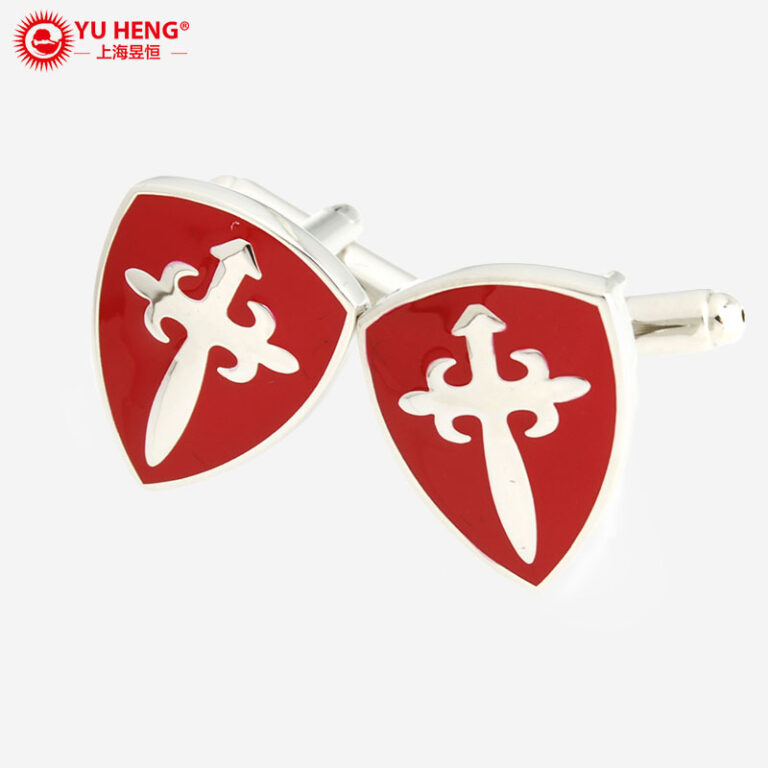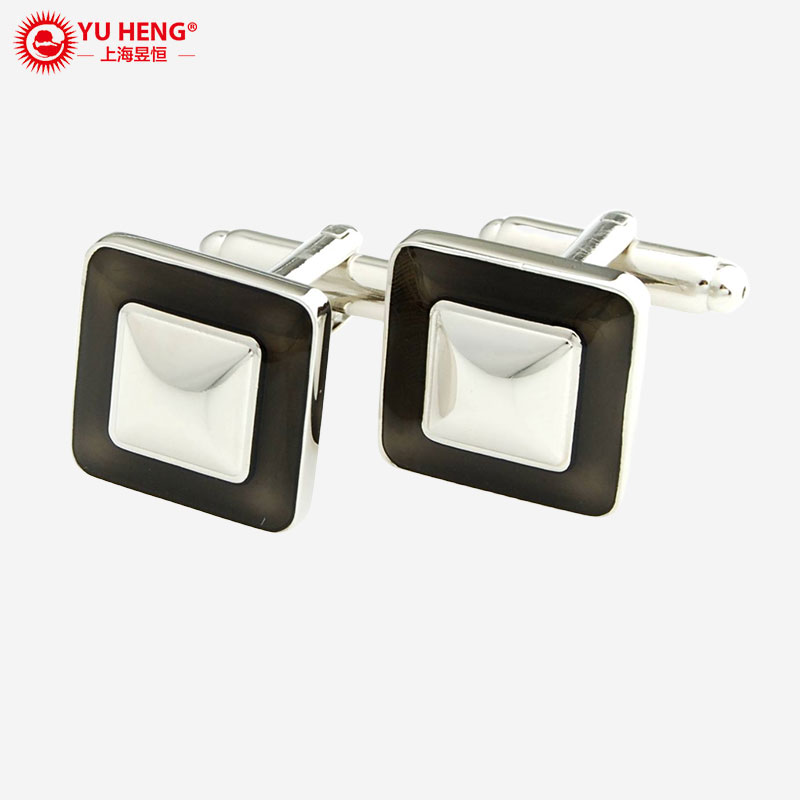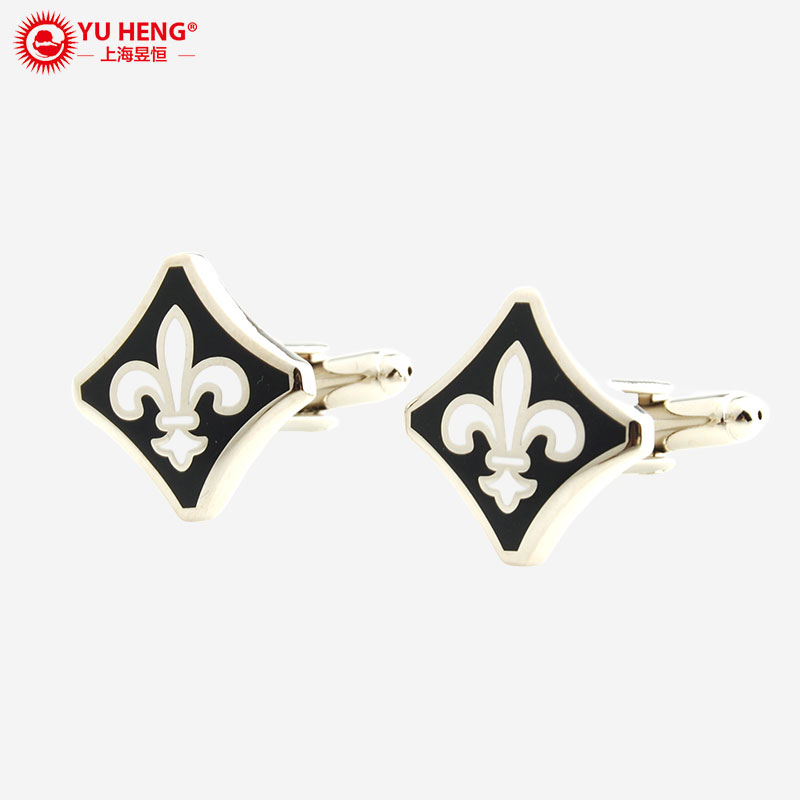When it comes to crafting unique, timeless, and high-quality cufflinks, the manufacturing technique plays a significant role in both the look and the value of the final product. Two of the most widely used methods in custom cufflink manufacturing are casting and die-striking. Both approaches bring distinct advantages, stylistic differences, and levels of craftsmanship. For brands aiming to introduce or expand their cufflink collections, understanding the difference between casted brass cufflinks and die-struck brass cufflinks is essential.
In this article, we will explore these two production methods in depth, discuss their benefits, and help you determine which option is best aligned with your brand identity. With more than 20 years of expertise in designing and producing cufflinks and related crafts, Shanghai Yuheng has observed market trends, customer preferences, and brand strategies that showcase the strengths of each approach.

The Importance of Manufacturing Method in Cufflink Branding
Cufflinks are more than just accessories; they are a statement of personality, heritage, or even corporate identity. For brands, cufflinks can function as promotional items, luxury products, or wedding essentials. Because cufflinks are both decorative and functional, the manufacturing method chosen will affect:
Durability – How long the cufflinks last with regular wear.
Detail – How precise and intricate the design appears.
Finish – The texture and polish of the surface.
Cost – Production expense and retail pricing.
Brand Perception – Whether customers view them as luxurious, bespoke, or mass-market accessories.
Choosing between casted brass cufflinks and die-struck cufflinks involves evaluating these factors in light of your brand’s positioning.
What Are Casted Brass Cufflinks?
Casted cufflinks are produced by pouring molten brass into molds that are shaped according to the desired design. Once cooled, the cufflink blanks are polished, plated, and assembled with their findings.
Key Features of Casted Brass Cufflinks:
Design Flexibility
Casting allows manufacturers to achieve highly detailed three-dimensional designs. Shapes that are complex, curved, or irregular are easier to create with casting compared to die-striking. For example, figurines, company mascots, or intricate symbols with layered elements can be beautifully realized through casting.Weight and Feel
Casted brass cufflinks typically have a solid, heavier feel in hand, which many customers associate with luxury and durability.Surface Texture
Since casting permits more freedom of form, textures like hammered effects, sculpted reliefs, and unique patterns can be added.Cost Considerations
Casting tends to be more cost-efficient for smaller production runs or designs requiring elaborate shapes. However, the process can result in slightly softer edges compared to die-striking.

What Are Die-Struck Cufflinks?
Die-struck cufflinks are created by pressing a sheet of brass between steel dies using extreme pressure. This process imprints the design onto the metal, similar to how coins are minted.
Key Features of Die-Struck Cufflinks:
Sharp Details
The die-striking method produces crisp, precise lines. Logos, monograms, and text-based designs benefit greatly from this technique because the details remain clean and professional.Durability and Hardness
By compressing the brass during striking, the resulting cufflink is denser and harder. This makes die-struck cufflinks more resistant to scratches and wear over time.Classic Appearance
Many luxury brands prefer die-struck cufflinks for their timeless, polished look. Flat, minimalistic, or geometric patterns are enhanced by this production method.Higher Setup Cost but Economical in Volume
Because die-striking requires custom steel dies, the initial setup cost is higher. However, for large production runs, it becomes more economical since each subsequent unit is produced quickly and with consistent quality.
Casted vs Die-Struck: A Technical Comparison
| Feature | Casted Brass Cufflinks | Die-Struck Cufflinks |
|---|---|---|
| Production Process | Molten brass poured into molds | Brass sheet struck with steel dies |
| Design Complexity | Excellent for 3D and intricate shapes | Best for flat, sharp, and detailed designs |
| Edge Sharpness | Slightly softer, rounded edges | Crisp and sharp details |
| Durability | Strong, but less dense than die-struck | More durable and resistant to wear |
| Weight | Heavier, solid feel | Slightly lighter but denser |
| Cost | Lower initial setup, good for small runs | Higher setup, economical for bulk orders |
| Finish Options | Can include textured surfaces, sculpted effects | Clean, polished, professional look |
| Brand Appeal | Creative, artistic, luxury impression | Classic, professional, prestigious image |

Main Types of Brass Cufflinks
When it comes to building a diverse and appealing cufflink collection, understanding the main product types is crucial. Brass cufflinks, whether casted or die-struck, can be designed in a variety of styles to meet different customer preferences and occasions. One popular category is classic round or square cufflinks, which feature simple geometric shapes, polished finishes, and sometimes subtle engraving. These are timeless pieces that appeal to corporate professionals, luxury clients, and formal event attendees.
Another widely favored style is themed or novelty cufflinks. These are often casted to allow intricate 3D designs, such as company mascots, hobby-related icons, or commemorative symbols. They are ideal for fashion-forward consumers, collectors, and brands looking to make a creative statement. Examples include musical instruments, animals, vehicles, or custom logos, which offer both personality and uniqueness.
Engraved cufflinks are another significant category, where personal initials, wedding dates, or corporate branding can be applied. Die-struck methods excel here due to their precision and clean lines, ensuring that text and logos remain sharp and legible. Hybrid designs, combining casted elements with die-struck details, are increasingly popular for brands wanting to blend sculptural artistry with crisp branding.
Finally, luxury plated or textured cufflinks add an extra layer of sophistication. Brass can be finished in gold, rhodium, silver, or antique tones, and textures such as brushed, hammered, or matte effects can enhance visual appeal. By offering a range of types—from classic and corporate to artistic and personalized—brands can cater to multiple market segments and create collections that resonate with both style-conscious and discerning customers alike.
Which Technique Fits Your Brand?
The decision between casted brass cufflinks and die-struck cufflinks comes down to brand identity and customer expectations.
For Creative or Fashion-Oriented Brands
If your brand focuses on bold, artistic, or thematic cufflinks (such as novelty designs, corporate mascots, or sculptural patterns), casting is often the best choice. It allows maximum freedom in form, making your products stand out in a crowded market.For Luxury, Heritage, or Corporate Brands
Die-struck cufflinks align better with high-end or corporate markets where precision, sharp logos, and timeless elegance are valued. They offer a professional finish that communicates tradition, quality, and seriousness.For Small Batches or Limited Editions
Casting is more efficient when you want to produce a limited run without heavy upfront tooling costs. This is especially beneficial for weddings, commemorative events, or small fashion drops.For Large-Scale Orders
Die-striking becomes more cost-effective for brands producing thousands of units. Corporate gift programs, promotional cufflinks, and retail brands with wide distribution often prefer die-striking.

Branding Considerations Beyond Technique
While the choice between casting and die-striking is crucial, it is not the only factor influencing your cufflink collection. Other considerations include:
Plating and Finish Options
Gold, rhodium, silver, gunmetal, and antique finishes can elevate both casted and die-struck cufflinks. Matte, polished, or brushed effects add another layer of customization.Engraving and Personalization
Die-struck cufflinks are particularly suited for initials, dates, or corporate logos. Casting can incorporate more playful personalization options, such as 3D elements.Packaging and Presentation
Luxury cufflinks should always be paired with elegant packaging. Even a perfectly made cufflink loses impact without the right presentation.Target Audience
Knowing whether you are appealing to grooms, corporate clients, collectors, or fashion-forward consumers will guide the right manufacturing method.
Future Trends in Cufflink Manufacturing
The cufflink market continues to evolve alongside fashion and personalization trends. Here are some key movements:
Sustainable Materials
Eco-conscious buyers are pushing for recycled brass and eco-friendly plating methods. Both casting and die-striking are adaptable to sustainable practices.Customization on Demand
Digital tools are making it easier for customers to design their cufflinks online. Brands that integrate this into production—whether through casting or die-striking—will attract modern buyers.Hybrid Techniques
Some luxury brands combine casting and die-striking to achieve both intricate shapes and sharp logos, blending the strengths of each method.Corporate Identity Expansion
Companies increasingly use cufflinks as subtle but powerful branding tools. Die-struck cufflinks dominate this space due to their clean finish, but casting offers creative branding opportunities.

Conclusion: Balancing Creativity and Precision
Both casted brass cufflinks and die-struck cufflinks have their rightful place in the world of custom cufflink manufacturing. Casting offers design freedom, sculptural depth, and creative flair, making it perfect for artistic and limited-edition pieces. Die-striking delivers precision, durability, and a timeless look, aligning with luxury and corporate markets.
For your brand, the best choice depends on whether you value creativity over classic elegance, small runs over mass production, or bold designs over crisp simplicity. Many successful brands incorporate both methods across different collections to cater to diverse customer needs.
At the end of the day, cufflinks are more than accessories—they are symbols of style, heritage, and individuality. Choosing the right production technique ensures that your brand communicates these values effectively, while giving customers a product they can treasure for years.
